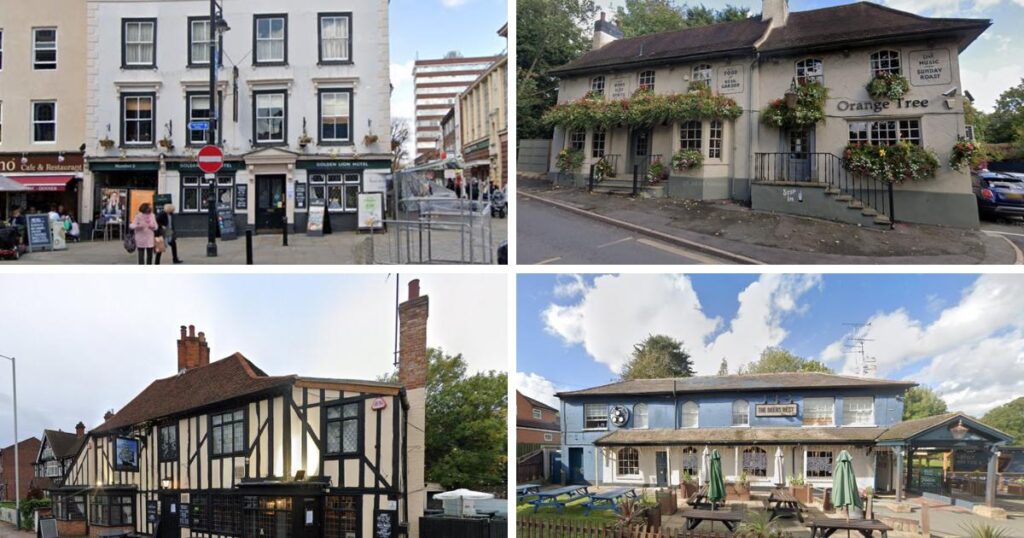Here are five of Havering’s oldest boozers still in operation today.
The Golden Lion, Romford
The Golden Lion, Romford (Image: Google) One of the oldest pubs in all of east London is The Golden Lion, located in High Street where it has stood since around the fifteenth century.
According to Havering Libraries, the earliest mention of the pub and hotel dates back to February 1482 when it was known as The Lion.
In 1956, the watering hole was included in a compulsory purchase order seeing the demolition of a number of properties in High Street although it came out unscathed and was grade listed in 1979.
The pub is now part of the Greene King portfolio, and the brewery claims it has been known for its haunted nature – with 23 reported ghost sightings.
One ghost is said to be the White Lady, a woman who held her wedding reception at the pub and was murdered in Harold Hill in the 1980s.
The Fatling, Hornchurch

It is understood that the name was inspired by the local church, St Andrew’s Church, also in High Street, which is unusually adorned with a bull’s head.
In 1981 the boozer closed for two months before reopening on June 19 under new tenancy.
A series of name changes followed in the later years, with the first seeing it re-named as The Fatling and Firkin in the 1990s.
In 2013 this was simplified to The Fatling and this has stuck since, though the name has never strayed far from The Bull, with a ‘fatling’ referring to an animal fattened for slaughter.
The Ship, Gidea Park

Despite changes and partial re-building of the site due to the discovery of dry rot in the 1950s, the pub claims to have remained “largely in its original form”.
It describes itself as “a genuine treasure” that “still retains its picture postcard appearance”.
Its website reads: “A detailed history of the place is actually unknown and undocumented.
“In our opinion the lack of information actually adds to the character of the building and the mysteries of the stories it holds.”
The Deers Rest, Noak Hill

It was initially named The Goat but was renamed to The Bear in 1715 and the pub became known for the live bear it kept in a cage in the beer garden in the 1960s.
A menagerie of other smaller animals and birds were also kept here throughout history.
The building has been much-extended and modernised but the original portion is identified by the four-centred arch windows.
In May 2019, the boozer was re-named The Deers Rest despite a petition against the change.
The Orange Tree, Havering-atte-Bower

According to Havering Libraries, it was known as the Olive Tree until 1785.
In 1838, an auction for the sale of the pub following the death of landlord John Robinson was held in the White Hart Inn.
Details from the auction referred to the location of the public house as “desirable”, claiming it to be “one of the most delightful in the county of Essex”.
In 2022, The Orange Tree underwent a garden refurbishment to the rear of the pub which exists to this day.




